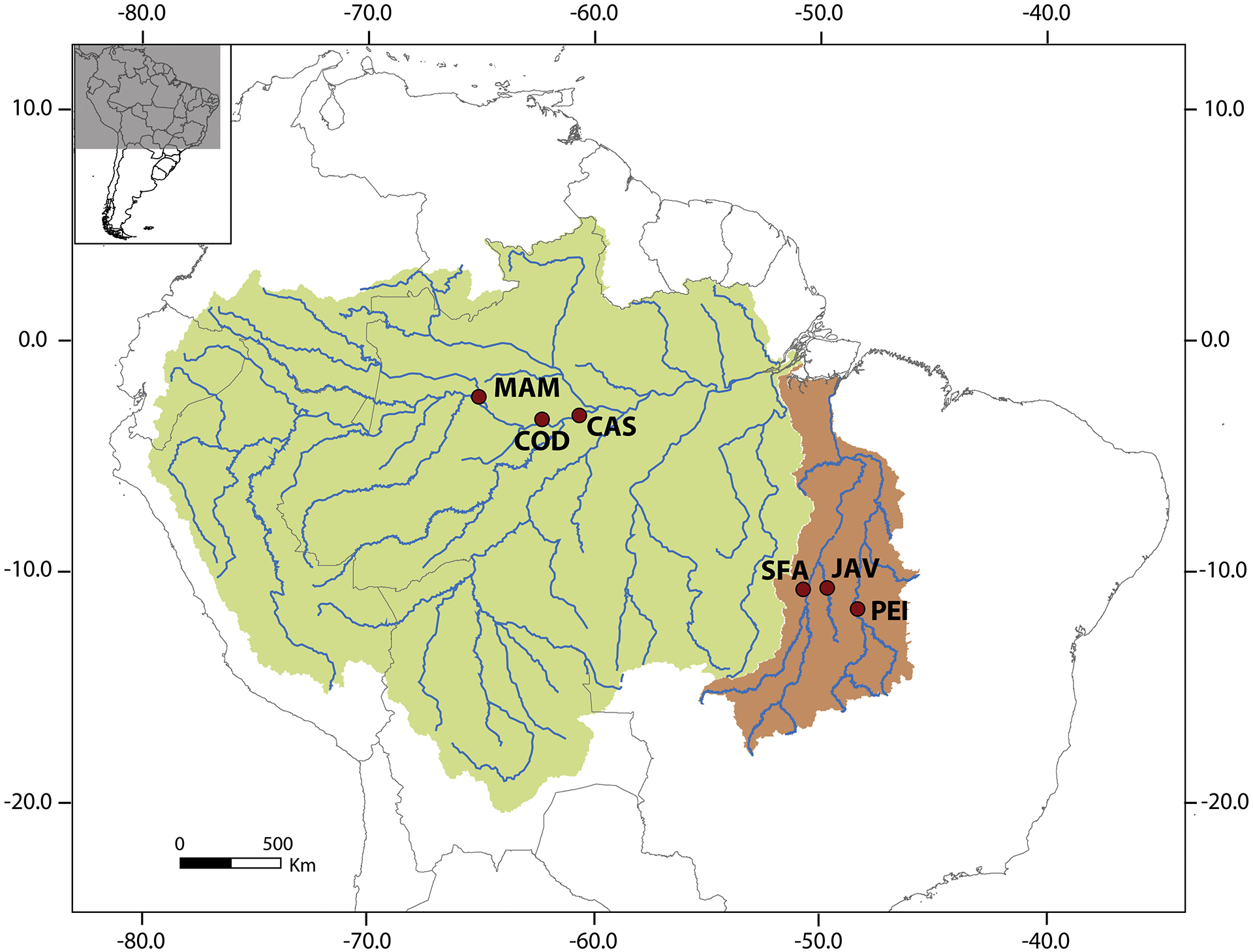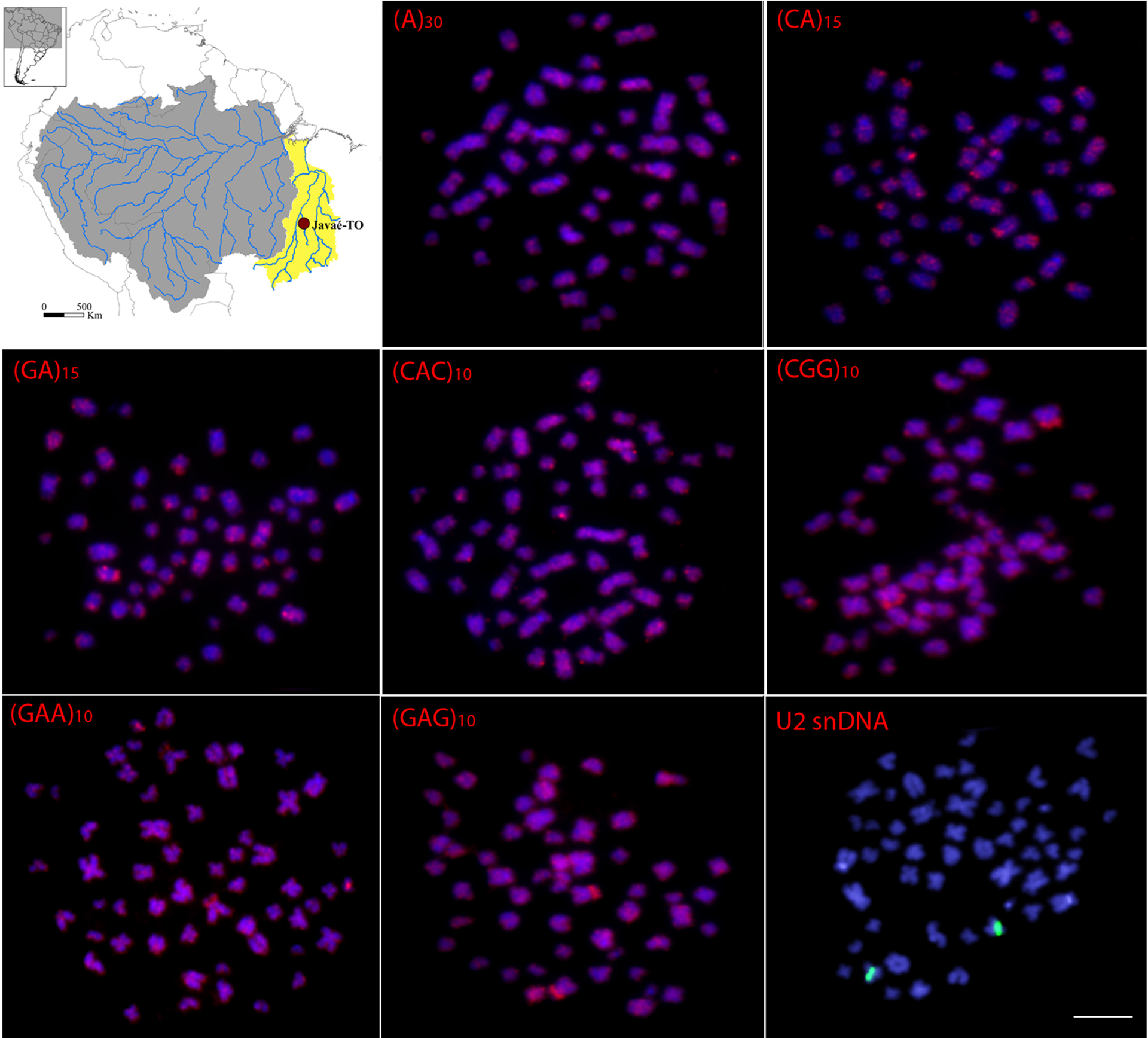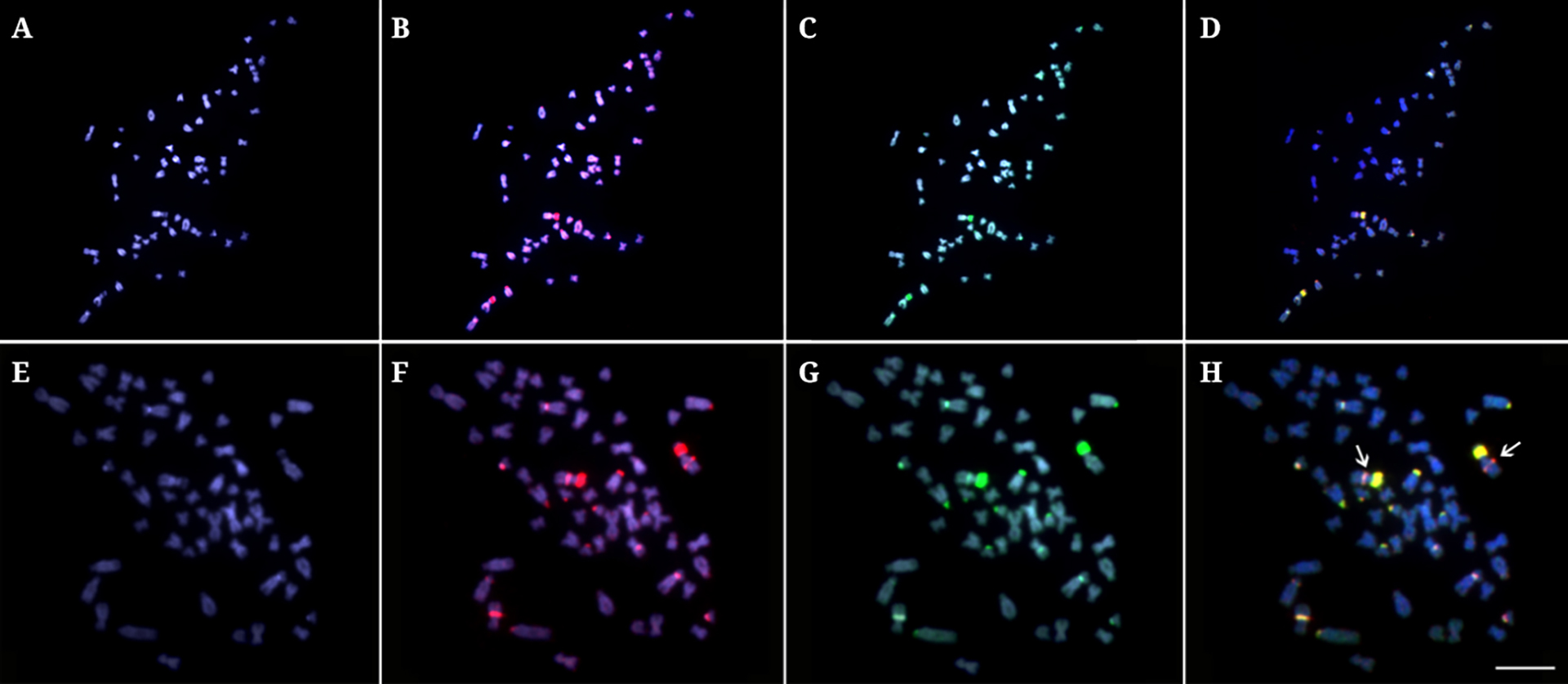Abstract
The South American giant fishes of the genus Arapaima, commonly known as pirarucu, are one of the most iconic among Osteoglossiformes. Previously cytogenetic studies have identified their karyotype characteristics; however, characterization of cytotaxonomic differentiation across their distribution range remains unknown. In this study, we compared chromosomal characteristics using conventional and molecular cytogenetic protocols in pirarucu populations from the Amazon and Tocantins-Araguaia river basins to verify if there is differentiation among representatives of this genus. Our data revealed that individuals from all populations present the same diploid chromosome number 2n=56 and karyotype composed of 14 pairs of meta- to submetacentric and 14 pairs of subtelo- to acrocentric chromosomes. The minor and major rDNA sites are in separate chromosomal pairs, in which major rDNA sites corresponds to large heterochromatic blocks. Comparative genomic hybridizations (CGH) showed that the genome of these populations shared a great portion of repetitive elements, due to a lack of substantial specific signals. Our comparative cytogenetic data analysis of pirarucu suggested that, although significant genetic differences occur among populations, their general karyotype patterns remain conserved.
Keywords:
CGH; Chromosome banding; Fish cytotaxonomy; Osteoglossomorpha; rDNA FISH

 Thumbnail
Thumbnail
 Thumbnail
Thumbnail
 Thumbnail
Thumbnail
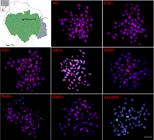 Thumbnail
Thumbnail
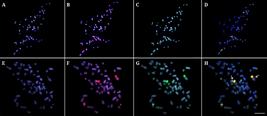 Thumbnail
Thumbnail
